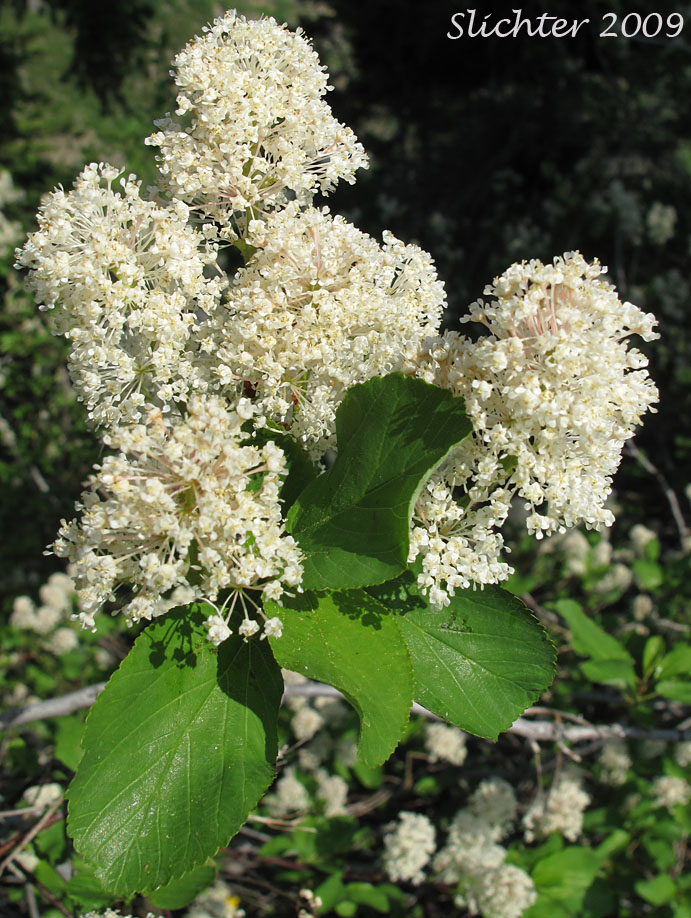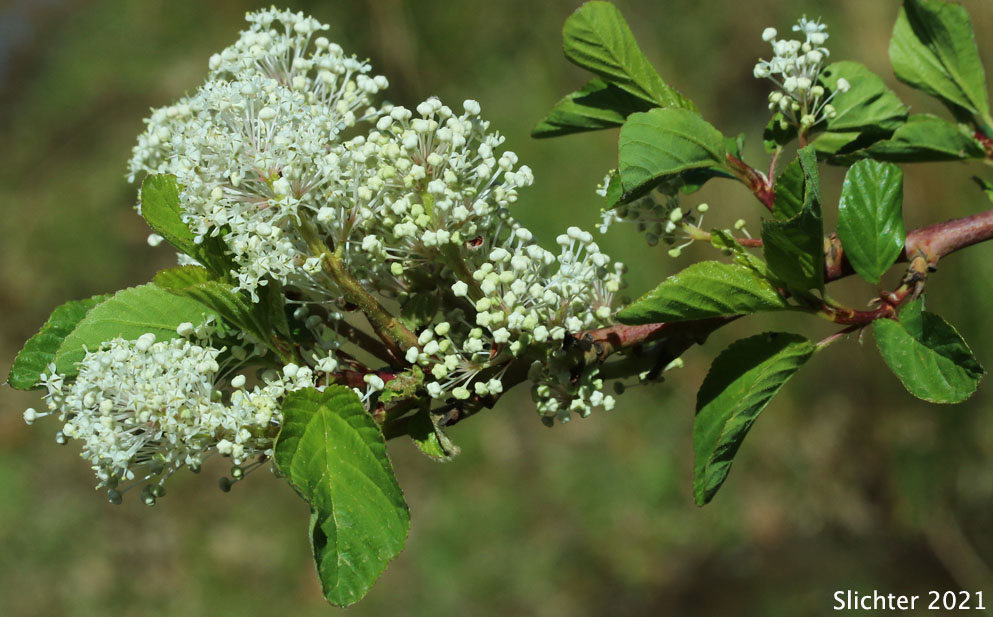 -
- 
Buck brush is an erect, loosely branched shrub ranging from 1-3 meters high. Dead limbs and twigs often poke out here and there from the plant. The stems are smooth-surface with a purplish-red coloration. They are alternately branched. The ovate to ovate-elliptic leaves also alternate along the stems, and they are deciduous unlike those of snow brush. Each leaf ranges from 3-10 cm long and the leaves are thin in cross-section. Individual leaves are smooth or glabrous above with a dark green coloration, while the lower leaf surface is paler. Three prominent leaf veins are found on the leaf surface, and the leaf margins are finely toothed and glandular.
The inflorescence is a panicle of small white flowers found on short lateral branches of the previous year's growth. The see capsules are about 4 mm long with 3 deep lobes which are not crested. The hard seed capsules persist to the next year, and the capsules tend to explode when exposed to fire.
Buck brush is a nitrogen-fixing plant which is an important browse species for elk and deer. It is also an important early successional stage plant following forest fires.
Buck brush may be found in open woods and thickets. It is often found on well-drained, stony to gravelly soils which have been recently disturbed by fire. It is often found growing with Douglas maple, hazel, ocean spray, serviceberry and snowbrush.
Buck brush may be found along both sides of the Cascade Mts. from British Columbia south to California. It is found eastward to Idaho and western Montana.